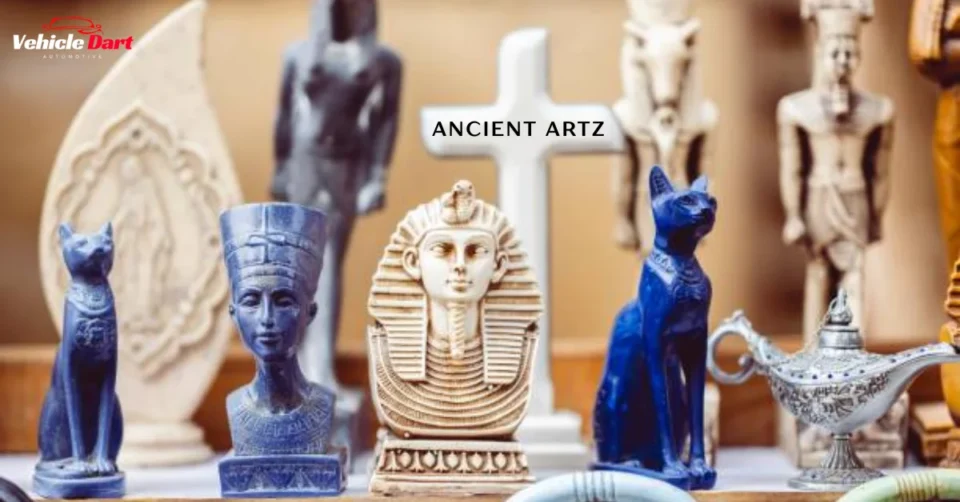Introduction to Ancient Artz
Art eternally mirrors the human spirit. Through ancient artz, we rediscover the imaginative essence and ingenuity of our earliest ancestors. From cave paintings to intricate carvings, these masterpieces tell stories that transcend time and culture. They whisper secrets about our origins, beliefs, and aspirations.
As we explore this fascinating world, we’ll discover how art served as both a form of communication and an expression of identity in early human societies. Join us as we unveil the significance of ancient artz and witness its evolution through the ages—a testament to creativity that continues to inspire generations today. Let’s step back in time and appreciate the artistic endeavors that shaped our shared history!
The Importance of Art in Early Human Societies
For early civilizations, art became an essential channel for expressing thoughts and emotions. It was not merely decoration; it conveyed stories, beliefs, and emotions. Through intricate carvings and vivid cave paintings, our ancestors shared their experiences with the world.
These artistic creations often had deep spiritual significance. They connected communities to their environment and fostered a sense of belonging among members. Rituals were enhanced by art, reinforcing cultural identities.
Moreover, art played an essential role in communication before written language emerged. Markings and symbols etched onto surfaces carried meanings of significant events and conveyed intricate ideas among communities.
As humans evolved, so did their artistic expressions. The transition from utilitarian objects to more abstract forms revealed cognitive advancements and creative thinking processes that shaped society’s development over time.
The presence of ancient artz reminds us that creativity has always been at the heart of human experience.
The Evolution of Ancient Artz through the Ages
The story of ancient artz is a fascinating journey through time, reflecting the shifting tides of human experience. From rudimentary cave paintings to intricate sculptures, each era unveiled new creative expressions.
In prehistoric times, early humans used natural pigments and simple tools to convey their surroundings. These primal images were often tied to survival and spirituality.
As civilizations emerged, so did more sophisticated techniques. Ancient Egyptians mastered hieroglyphics and monumental architecture that captured both beauty and religious significance.
The Greeks introduced realism in sculpture while exploring themes of mythology and philosophy. Each brushstroke or chisel mark told stories that transcended generations.
With the rise of empires came diverse influences that enriched artistic traditions across cultures. The fusion of styles showcased a vibrant tapestry woven from shared knowledge and innovation throughout history.
Exploring the Craftsmanship and Resources Harnessed by Early Creators
The world of ancient artz reveals a fascinating blend of creativity and resourcefulness. Early artists employed natural materials available in their environments, transforming simple components into remarkable works.
They often used ochre, charcoal, and clay to create pigments for their paintings. Materials were crushed into fine pigments and blended with natural binders such as plant sap or animal fat. This innovative approach allowed them to produce vivid colors that have survived through centuries.
When it came to sculpture, early artisans carved wood, bone, and stone into intricate figures and tools. Their techniques varied from simple chisel work to more complex methods involving heat treatment or polishing.
Fabrics and woven designs held great importance within the realm of ancient artz. Weaving techniques evolved over time as cultures embraced different fibers such as wool, cotton, and silk. The patterns woven into these fabrics often carried deep cultural meanings reflecting the societies that created them.
Analyzing the Cultural Significance of Ancient Artz
Ancient artz opens a glimpse into the world of early humans, where every creation reveals traditions, faith, and daily experiences, embodying the hopes and ideals of their makers.
Cave paintings, for instance, reveal hunting practices and spiritual connections to nature. Sculptures often embody deities or represent societal roles. This artistic expression was not merely decorative; it played a vital role in community identity.
Moreover, ancient artz acted as a form of communication across generations. Symbols used by one tribe could resonate with another, fostering cultural exchange and understanding. As we analyze these pieces today, we uncover shared human experiences that transcend time.
The richness of ancient artz also highlights diversity among civilizations. Different techniques and materials showcase regional resources and influences while celebrating unique worldviews through creativity.
The Legacy of Ancient Artz: How it Continues to Inspire Modern Creations
The legacy of ancient artz is woven into the fabric of contemporary creativity. Today, artists draw inspiration from primitive techniques and themes that resonate with human experience. These early expressions often reflect fundamental emotions, natural elements, and communal stories.
Modern sculptures echo the bold lines and forms found in ancient carvings. Painters frequently revisit palettes reminiscent of ochres and earth tones used by their ancestors. This connection transcends time, bridging gaps between past and present.
Fashion designers also incorporate motifs inspired by ancient civilizations—textiles adorned with patterns that tell stories as vividly as cave paintings do. The essence of these artistic traditions continues to breathe life into various creative fields.
As we explore new mediums like digital art or street murals, echoes of ancient artz remind us where it all began. Each brushstroke carries a piece of history, inviting contemplation about our roots while encouraging innovation in expression.
Conclusion: Embracing the Creative Spirit of our Ancestors through Ancient Artz
Embracing the creative spirit of our ancestors through ancient artz allows us to connect with a profound part of human history. It invites us to explore the depths of early creativity and innovation, revealing how these expressions have shaped cultures across time.
Ancient artz serves as a testament to humanity’s desire for communication, storytelling, and connection. The techniques and materials used by early artists remind us that artistry has always been an integral part of life. As we look back at these masterpieces, we gain insight into the values, beliefs, and experiences that defined those who came before us.
The influence of ancient artz still echoes in modern creativity and culture. Modern creators draw inspiration from those early works, blending traditional elements with contemporary ideas. This ongoing dialogue between past and present enriches our understanding of what it means to be human.
By appreciating ancient artz, we honor not only the skillful hands that crafted each piece but also the vibrant communities that nurtured these artistic endeavors. Their creativity fuels our imagination today as we strive to express ourselves in new ways while remaining rooted in shared history.
A gift of creativity for you, cherished reader—explore deeply on Vehicle DART.

